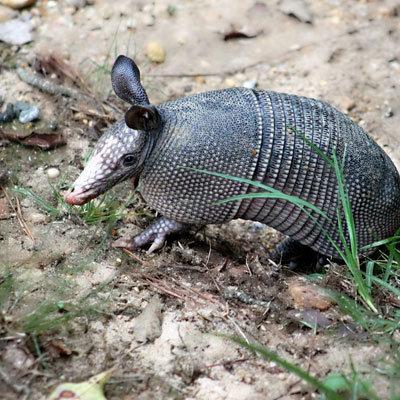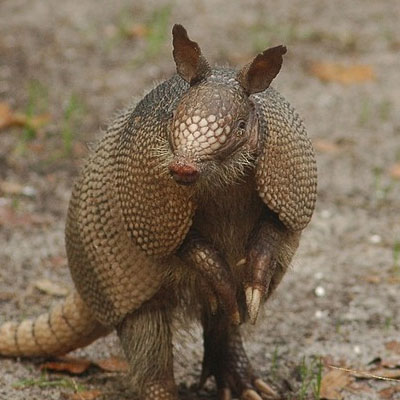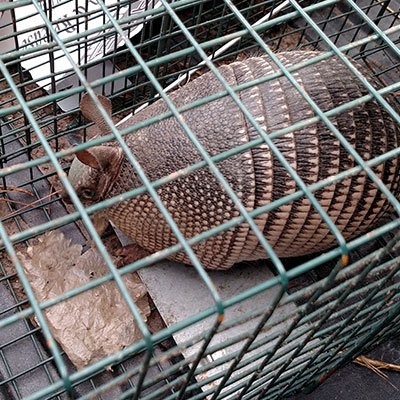Armadillo Removal: How to get Rid of Armadillos
You have probably encountered one of these cute little armored animals before. In Spanish, the name armadillo translates to “little armored one”. Armadillos are native to Central America, as they typically seek warmer habitats, however the Nine-Banded Armadillo has migrated its way into the southern states in America. Armadillos prefer hot climates, as they have no real fatty tissue on their bodies to keep warm, and they prefer a looser sand-like soil to dig their burrows in. Armadillos leave tiny holes in their wake as they search through the ground for insects with their snouts. They have poor eyesight so they will walk slowly, following their keen sense of smell. They live in burrows and so in order to dig them, armadillos are also equipped with sharp claws and strong legs.
Aside from the numerous small holes they will leave behind, armadillos dig a burrow which is their main home. They will curl up and sleep in those burrows for up to sixteen hours a day. They look for their food mostly during the early morning hours and the late evening. However, you may find one out during the day on crisper afternoons to soak up the sun.The burrows are also used during the winter for armadillos to hibernate in. Burrows are easy to identify as they can be up to 15 feet wide! Armadillos will eat meats as well as vegetation and fruits, although they normally are found to eat insects and their larvae. They love to find beetles, and ants, as they are closely related to the anteater family.

Armadillos are solitary creatures, you most often will not see armadillos together. They only are together for mating purposes, and then to take care of the babies. Babies become independent relatively quickly, around 6 months, and go off on their own. Sadly, one of the most common places you’ll see armadillos is on the side of the road, they often try to cross roads late at night and will wind up getting hit. While their armor can protect them from most enemies, our cars are not one of them.
Armadillos commonly show up in residential lawns, and can cause a nuisance. You can often find holes scattered throughout the yard, a couple inches wide and about an inch deep. They may also uproot some of your garden plants if the garden is easily accessible to them. One of the major concerns that they can pose is while they are rooting and digging for food throughout your lawn, they can break pipes or wires located underground. For these reasons, they are often not a very welcome guest in your backyard.

So, how do you get rid of them before they start causing serious damage? One of the best ways to prevent armadillos in the first place is to have fencing that also goes under the ground at least a couple of feet. Armadillos may not be able to climb fences, but they can dig under them very well. Fences also need to extend at least a couple feet high to prevent them from trying to climb over them. Another great method of deterring armadillos from considering your yard as their new home, is to make sure there’s no excess of yummy insects to lure them. If you have a garden full to the brim with worms, they will be tempted to come investigate. If possible, try to eliminate bugs that may be incentive for the armadillo to move in.

If you do have an armadillo moving into your backyard, the best option to get rid of him is to live trap and then relocate. This is the most humane way to take care of the problem, as well as the most effective. However, there are traps that can kill the armadillo immediately, most lethal traps will not work on armadillos due to their hard shell, so it is important to make sure you get one that is designed for armadillos. There are no real poisons or repellents that work on these animals. You can try to shoot the armadillo, but the likelihood of him being out during the day where it would be an easy kill is slim. Armadillos can also run pretty fast if they feel as though they are threatened.
Armadillos are not dangerous animals and killing them is not a necessary thing. They pose no real threat to humans or animals. This is why live trapping would be the best option.